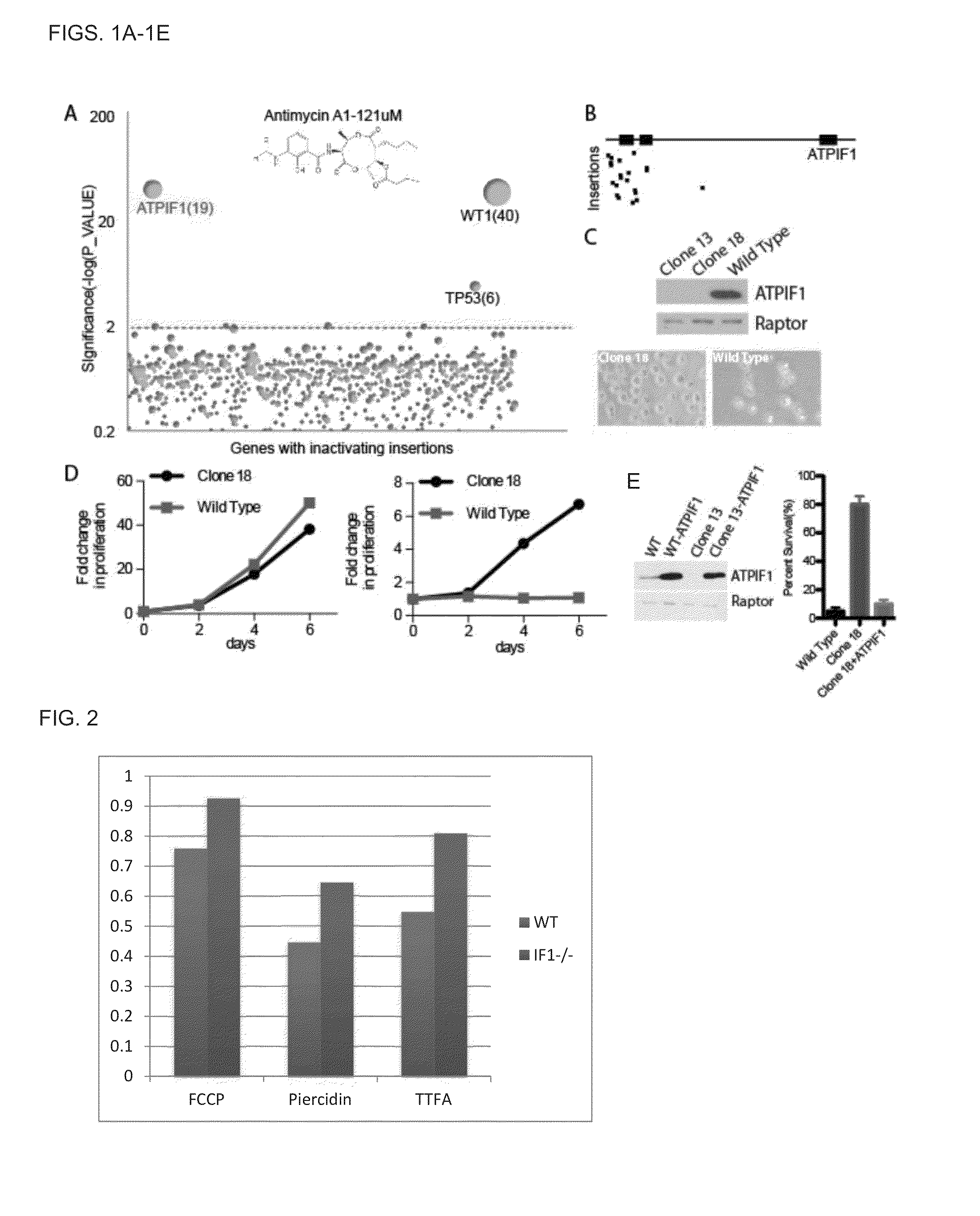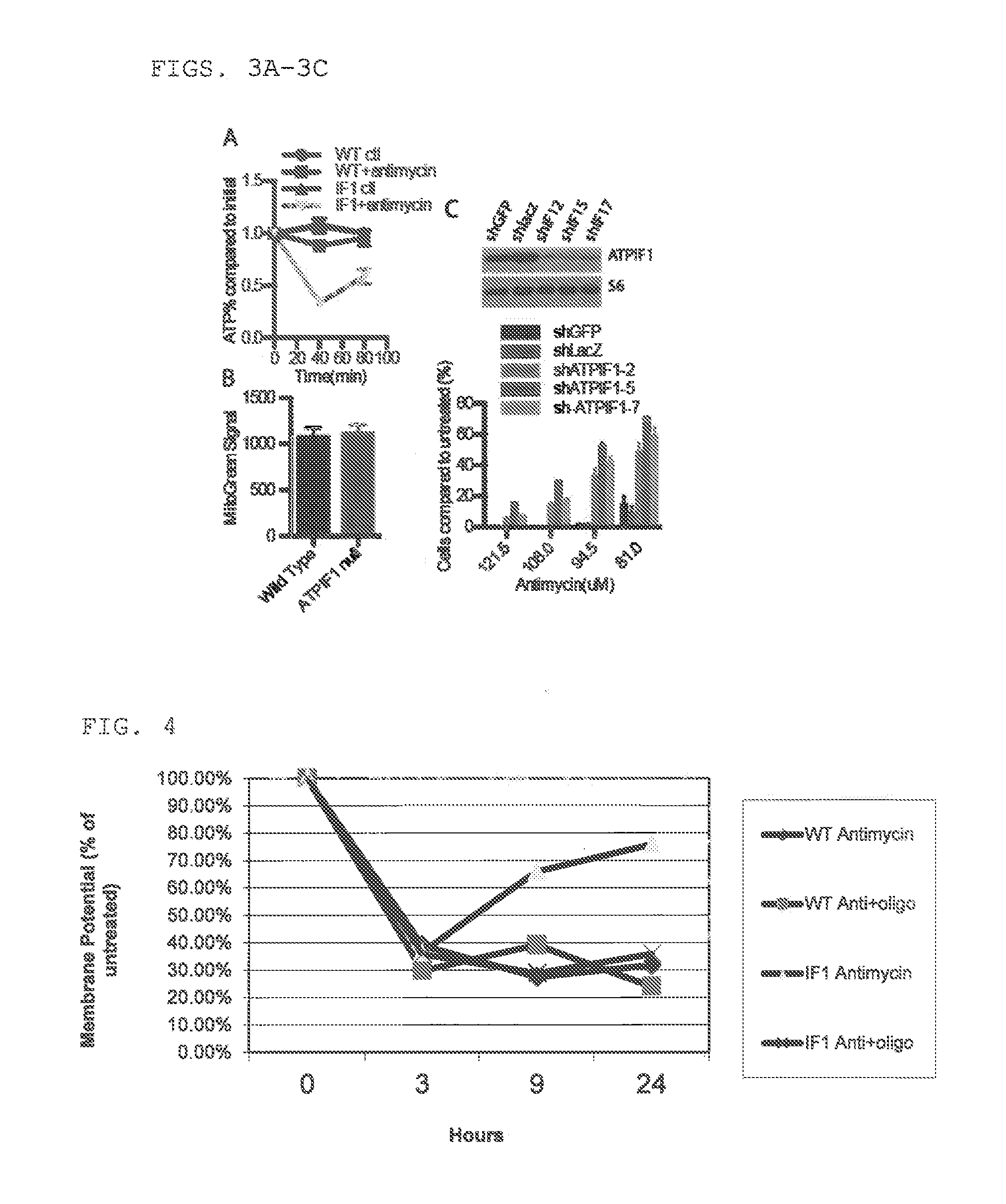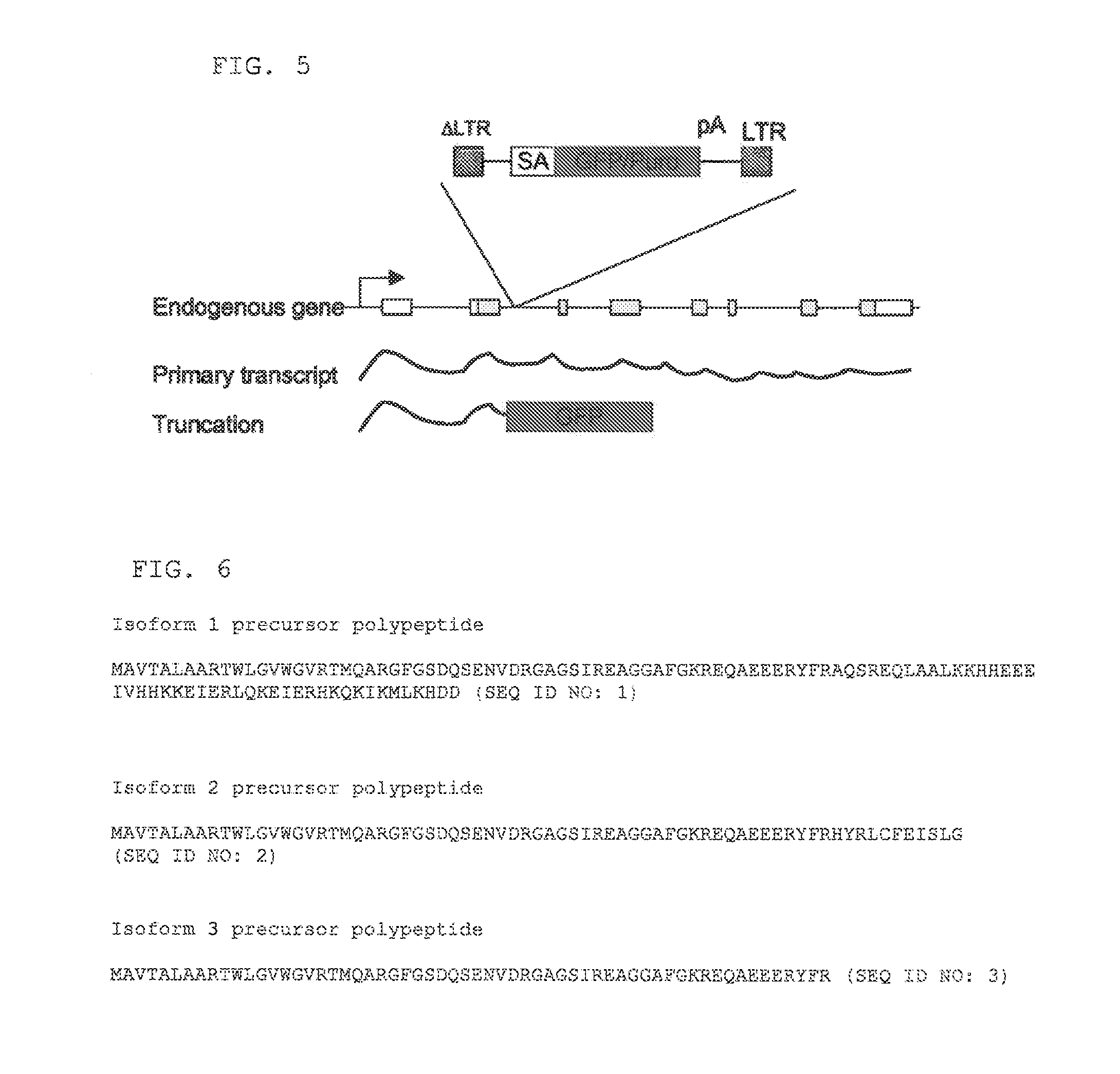Therapeutic targets for mitochondrial disorders
a technology for mitochondrial disorders and therapeutic targets, applied in cell culture active agents, instruments, artificial cells, etc., can solve the problems of limited current therapies, achieve the effects of protecting against mitochondrial dysfunction, reducing the functional expression of genes, and reducing the sensitivity to mitochondrial poison
- Summary
- Abstract
- Description
- Claims
- Application Information
AI Technical Summary
Benefits of technology
Problems solved by technology
Method used
Image
Examples
example 1
Haploid Genetic Screen Using Antimycin Identifies “ATPIF1 Loss” as Conferring Resistance Against Complex III Inhibition
[0379]In order to identify potential drug targets for treatment of mitochondrial disorders, we decided to use inhibitors of oxidative phosphorylation (OXPHOS) to model mitochondrial diseases and search for genes, loss-of-function of which can confer resistance to mitochondrial dysfunction caused by the poison. To that end, we explored use of a screening platform based on gene inactivation in human cells using insertional mutagenesis that has recently been developed using the KBM7 CML cell line, which is haploid for all chromosomes except chromosome 8 (5). In this system, insertional mutagenesis is accomplished using a gene trap vector. Our screening approach entailed treating mutagenized KBM7 cells with inhibitors of oxidative phosphorylation, isolating cells able to survive such treatment, and identifying genes enriched for mutations in the surviving cell populatio...
example 2
ATPIF1 Loss Confers Resistance to Multiple Mitochondrial Poisons
[0390]We investigated whether loss of ATPIF1 function would confer resistance to other OXPHOS inhibitors in addition to antimycin. Indeed, ATPIF1 null cells were resistant to complex I inhibitor (piercidin A), FCCP (uncoupler) and complex II inhibitor (TTFA) (FIG. 2), although the degree to which ATPIF1 loss conferred resistance was greater in the case of antimycin (a complex III inhibitor). Thus, ATPIF1 loss is thus able to confer resistance to inhibitors of at least three of the five protein complexes of the respiratory chain. These results further support the potential of ATPIF1 as a therapeutic target for treatment of mitochondrial disorders. In FIG. 2, the Y-axis represent fraction of surviving cells relative to control cells not treated with the agent.
example 3
Testing Potential Mechanisms of Resistance to Antimycin in Cells Lacking ATPIF1 Function
[0391](1) Alterations of Cellular ATP Levels:
[0392]ATPIF1 expression has previously been shown to be essential for survival following ischemia, by inhibiting ATP synthase hydrolytic activity and preserving cellular ATP levels (13). Because increased cellular ATP level is associated with greater viability, we investigated whether ATPIF1 null cells had greater ATP levels following antimycin treatment. Our initial experiments treating cells with antimycin demonstrated that ATPIF1 null cells actually have significantly lower levels of initial ATP compared to WT cells (FIG. 3A), which suggests that a change in ATP levels cannot explain the mechanism of resistance.
[0393](2) Alterations in Number and / or Structure of Mitochondria:
[0394]There is evidence that ATPIF1 can modulate mitochondrial ultrastructure and thus cellular respiratory capacity (12). We therefore considered the possibility that cells res...
PUM
| Property | Measurement | Unit |
|---|---|---|
| mass | aaaaa | aaaaa |
| mass | aaaaa | aaaaa |
| mass | aaaaa | aaaaa |
Abstract
Description
Claims
Application Information
 Login to View More
Login to View More - R&D
- Intellectual Property
- Life Sciences
- Materials
- Tech Scout
- Unparalleled Data Quality
- Higher Quality Content
- 60% Fewer Hallucinations
Browse by: Latest US Patents, China's latest patents, Technical Efficacy Thesaurus, Application Domain, Technology Topic, Popular Technical Reports.
© 2025 PatSnap. All rights reserved.Legal|Privacy policy|Modern Slavery Act Transparency Statement|Sitemap|About US| Contact US: help@patsnap.com



